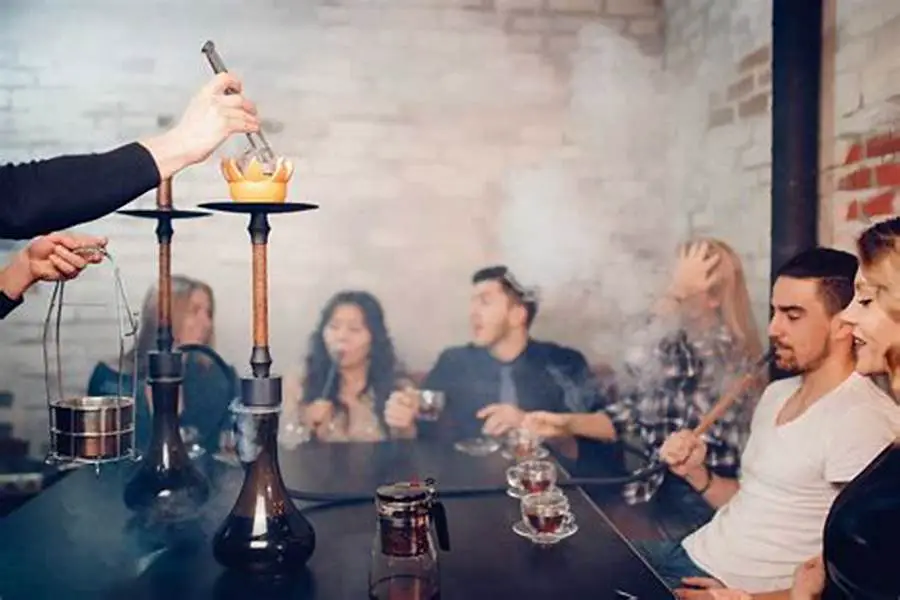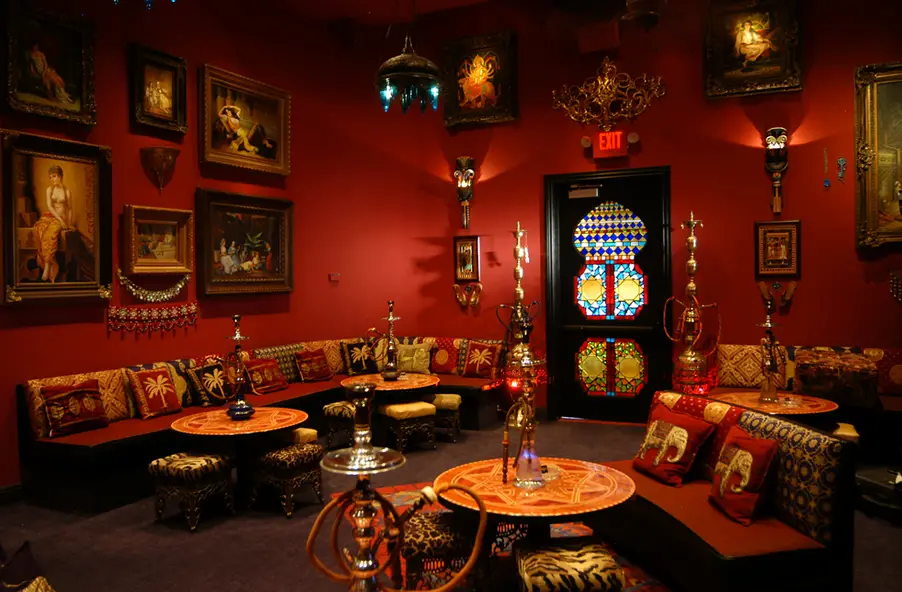Picture a cozy corner bathed in a soft, dim light, where tendrils of fragrant smoke weave intricate patterns through the air. People gather around, captivated by the centerpiece – a magnificent hookah. This is the captivating world of hookah lounges, where culture and companionship meld seamlessly.
These lounges cast a spell that appeals to both the young and the old, drawing them into an enticing experience. But hidden beneath the surface of this social haven lies a complex tapestry of legal boundaries, health worries, and marketing tactics aimed squarely at the youth. If you are someone interested in going to Hookah bars and wondering if you’re eligible, this blog is for you.
Table of Contents
ToggleThe Allure of Hookah Lounges

Hookah lounges hold an irresistible charm. They serve as hubs for socializing, conversations, and cultural immersion. The shared ritual of passing a hookah pipe creates bonds that surpass language and cultural barriers. Adding to the allure is the misconception that hookah, with its water filtration process, is a safer substitute for cigarettes, leading to the belief that it poses fewer health risks.
Legal Age Restrictions for Hookah Lounges
Amidst the allure, entry into hookah lounges is governed by legal constraints. These limits, however, aren’t uniform – they fluctuate between regions and countries, demanding an understanding of local regulations. For instance, the United States mandates a legal age of 21 for buying and using tobacco products, including hookah. A similar threshold applies globally, yet it can diverge based on the local context.
For instance, in most parts of Australia, the legal smoking age is 18. However, it’s crucial to remember that some regions have advocated raising the age restriction to 21. The average tobacco purchase age in European nations, including the United Kingdom, France, and Germany, is 18 in accordance with their legal adulthood standards. Conversely, countries like India have imposed a varied age limit, ranging from 18 to 21, depending on the specific state regulations.
These variations underscore the intricate interplay between cultural norms, legislative decisions, and public health concerns. As global awareness of the risks associated with hookah smoking increases, more jurisdictions are opting for higher age limits to discourage early initiation and safeguard the well-being of their youth.
Health Risks and Youth Vulnerability
Despite its mystique, the hazards linked to hookah smoking are hard to ignore. The water filtration system doesn’t grant immunity; hookah smoke still delivers harmful chemicals and poses grave health risks. Respiratory and cardiovascular problems lurk on the horizon, dispelling the notion that hookah is a benign pursuit. The question arises – why does this attract the youth so intensely?
The younger generation is susceptible to novelty and social trends. Peer pressure, the yearning to belong, and a lack of awareness about true risks collectively heighten their vulnerability. The illusion of safety, coupled with the social appeal, casts an enchanting spell over the young demographic.
Public Health Advocacy and Regulations

Recognizing the troubling trend of youth engagement in hookah smoking, public health campaigns have been mobilized to elevate awareness about the associated perils. These campaigns, often driven by a mix of medical research and grassroots advocacy, aim to equip young individuals with knowledge about the potential health hazards linked to hookah smoking.
By employing social media, school programs, and community outreach, they’re actively fostering awareness, urging individuals to make informed decisions about their well-being.
Governments are also taking a stand through regulations that deter underage tobacco consumption. Their strategies range from stringent age verification protocols to comprehensive anti-smoking campaigns. In the United States, for instance, the Food and Drug Administration (FDA) has introduced regulations that extend its authority over tobacco products, including hookah tobacco. These regulations encompass age verification measures and packaging restrictions aimed at minimizing appeal to the youth.
Industry Influence and Marketing Tactics
The hookah industry employs shrewd marketing strategies to captivate the youth. Flavored tobacco, with its array of tempting choices, plays a pivotal role. Industry experts tap into flavors that resonate with youthful tastes, drawing them into the realm of hookah. These strategic maneuvers, however, spark ethical concerns, exacerbating the growing prevalence of underage hookah smoking.
However, these marketing tactics have drawn the scrutiny of health advocates and ethicists. By enticing the youth with appealing flavors and aesthetics, the industry raises ethical questions about the potential exploitation of young minds. The line between informed choice and manipulation becomes blurred, casting a shadow over the concept of free will.
Regulating bodies and public health organizations are closely examining the marketing strategies used by the hookah sector in response to these worries. To find a balance between consumer choice and public health protection, efforts are being made to put stronger rules on the promotion of flavored tobacco products.
Responsible Practices and Youth Engagement
To counteract this worrying surge, hookah lounges must embrace responsible age verification methods. Stringently enforcing age restrictions stands as a bulwark against underage entry. Simultaneously, it’s crucial to establish community and school programs that educate young individuals about the perils of hookah smoking. By nurturing informed decision-making and fostering critical thinking, these initiatives empower the youth to make wiser choices.
The onus isn’t solely on establishments; parents, educators, and mentors have a pivotal role. Candid dialogues about the dangers associated with hookah smoking equip young minds to withstand peer pressure and make educated decisions about their well-being.
We hope the above information helped you understand how old one should be before stepping into a hookah bar.
Conclusion
Hookah lounges offer an intriguing escape into a world of camaraderie and cultural exchange. Yet, this enchanting experience is intertwined with age restrictions, health anxieties, and marketing ploys that specifically target impressionable youngsters. As we navigate this intriguing universe, it’s paramount to grasp the legal framework and health risks involved.
Public health campaigns and responsible approaches can counteract the industry’s sway, steering the younger generation toward informed choices. Amidst the pursuit of pleasure, it’s essential to ensure that the allure of hookah lounges doesn’t overshadow the significance of safeguarding the well-being of our youth.

I am a passionate beer connoisseur with a deep appreciation for the art and science of brewing. With years of experience tasting and evaluating various beers, I love to share my opinions and insights with others and I am always eager to engage in lively discussions about my favorite beverage.
















